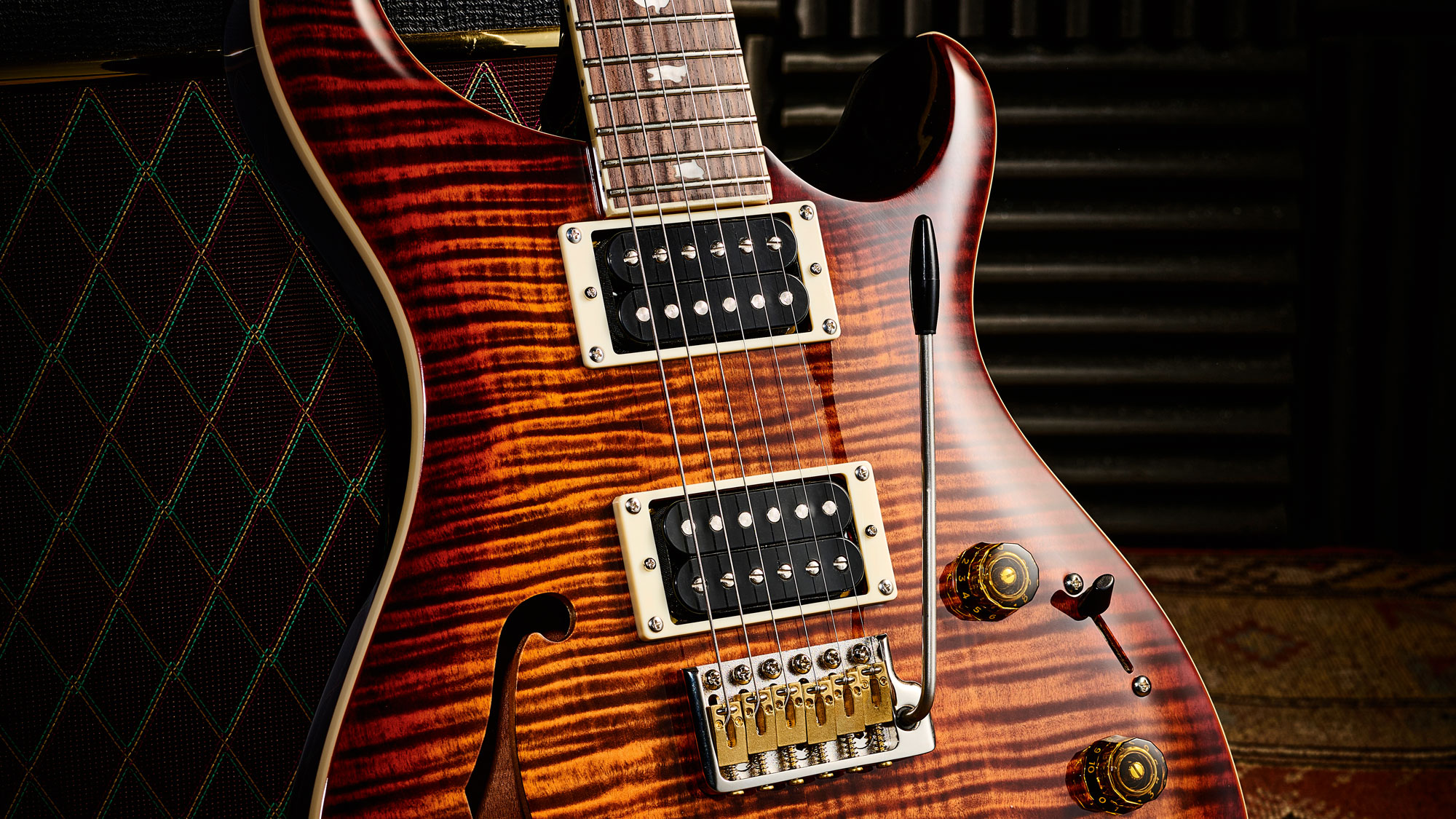
It seems a blindingly obvious thing to say, but first and foremost PRS is a company that makes guitars. The craft has always been the foundation, and now – nearly 40 years since Paul Reed Smith and his small team started out in Annapolis – this new SE Custom 24 Semi‑Hollow upholds everything that PRS has built its empire on: quality.
Our review sample has already travelled huge distances to get to us: from Indonesia (where it’s made in partnership with CorTek), across the seas to PRS’s USA HQ, and then back to PRS Europe’s base in Cambridge before the relatively short UK courier drop-off.
It’ll have been QC’d and inspected leaving CorTek’s factory, on arrival in the USA, and then PRS Europe’s Nick Fraser won’t have let it out of the door until his and his team’s experienced hands have checked it, too.
Pulling the guitar from its gigbag, it needs just a quick tuning check and we’re done – and if you can find a single hair out of place anywhere, well, we couldn’t.
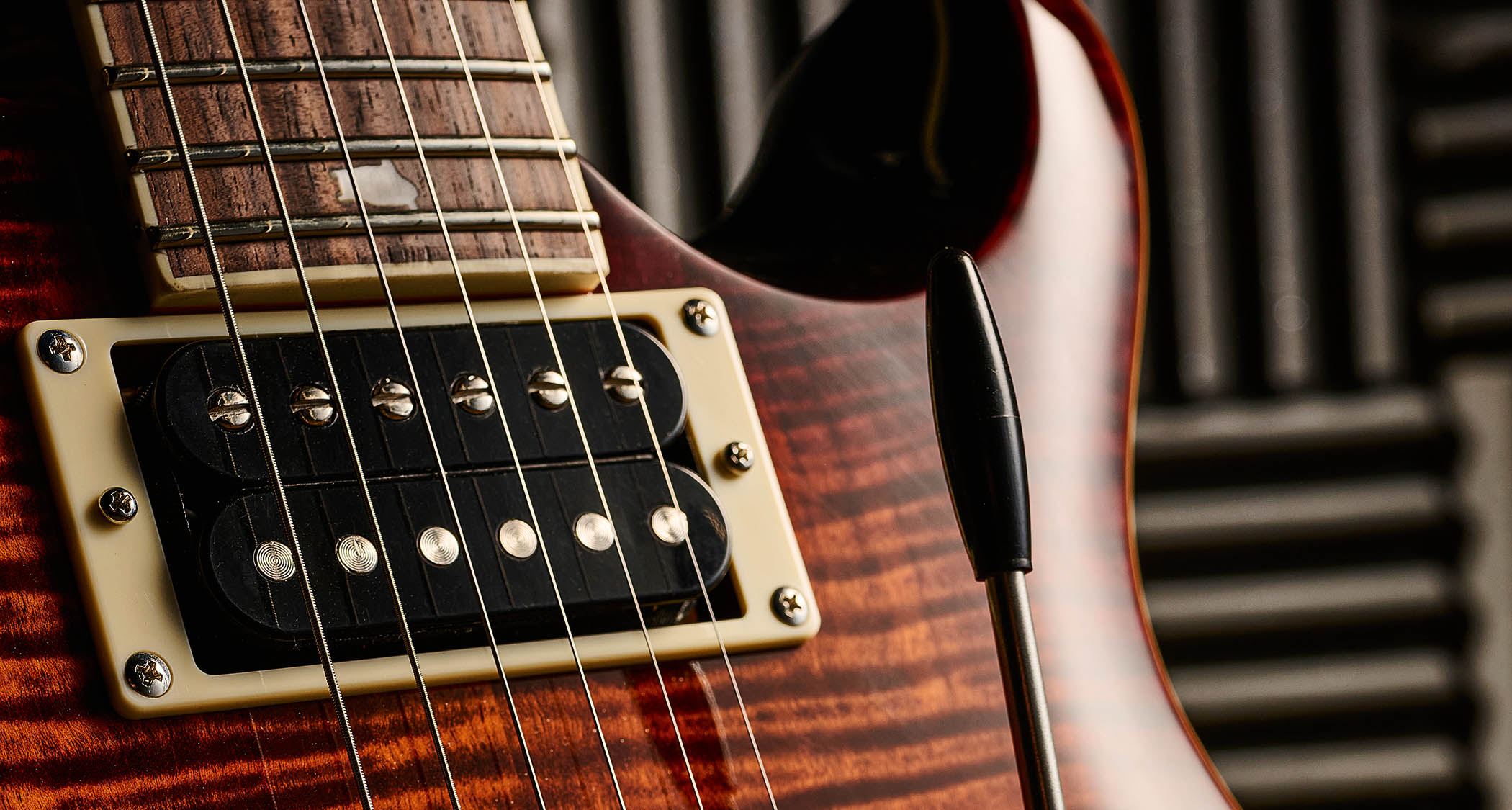
As we noted in our recent review of the 2024 SE NF3, the craft of the Indonesian CorTek factory just seems to get better, so much so that we commented on how close that bolt-on model is getting to the feel and detail of the USA models.
That impression is very similar here. As the foundation of the brand, the Custom 24 just doesn’t seem to age and it’s one of the few new post-1965 designs that has become a genuine classic guitar. But what’s different here?
In simple terms, it marks the return of the SE Custom in a semi-hollow style then adds a piezo circuit that’s mounted on a vibrato, not the hardtail bridge of the current SE Hollowbody models. The SE recipe sticks close to the original PRS vision with the same body and headstock outline, and 24-fret 635mm (25-inch) scale length, although there are plenty of differences.
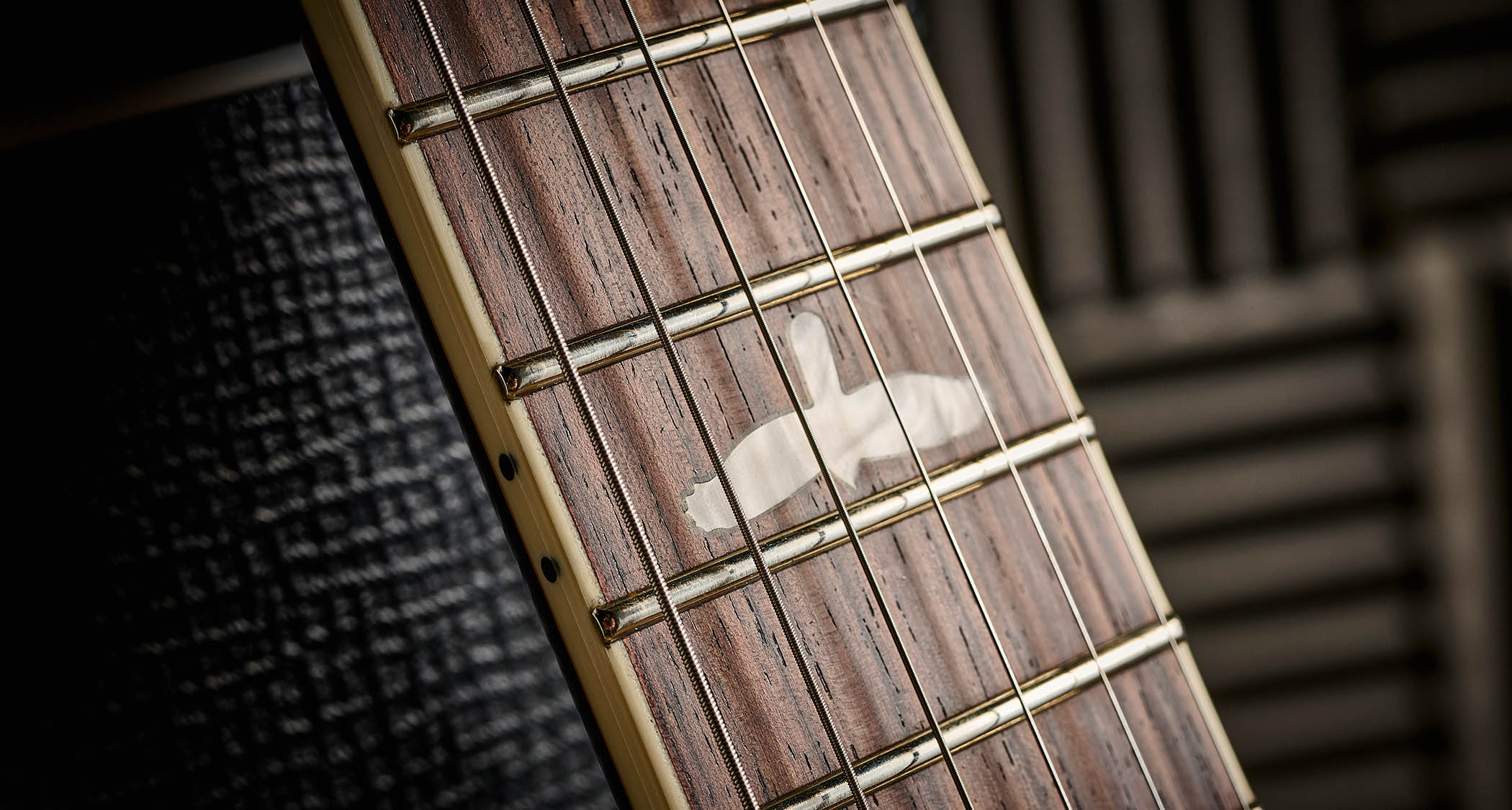
The ‘shallow violin’ carve to the top is much less dished than the USA model. In fact, the top is pretty much flat with the exception of the outer edges’ curved relief, and there are no indents for the control knobs, which contributes to an overall depth of 45mm. The top itself is a thin flamed maple veneer over the thicker solid maple underneath, while the body back is simply classed as mahogany.
The glossed finish is perfect and comprises a very hard urethane base coat and topcoat finish very similar to what PRS was using in Maryland in the 1990s
Here, of course, that back is routed away so that the bass-side half seems mainly hollow, while there’s extensive routing on the treble side, not least the enlarged control cavity, which has to take the circuit board for the piezo pickup.
Neither the electronics nor the spring coverplates are recessed like the USA Core models, but the cream edge binding here is very crisp, and the glossed finish is perfect and comprises a very hard urethane base coat and topcoat finish very similar to what PRS was using in Maryland in the 1990s, we’re told.
While the top stain is a new SE colour, it’s a classic dark ’burst but only on that top; the back, sides and neck back are all a dark brown opaque.
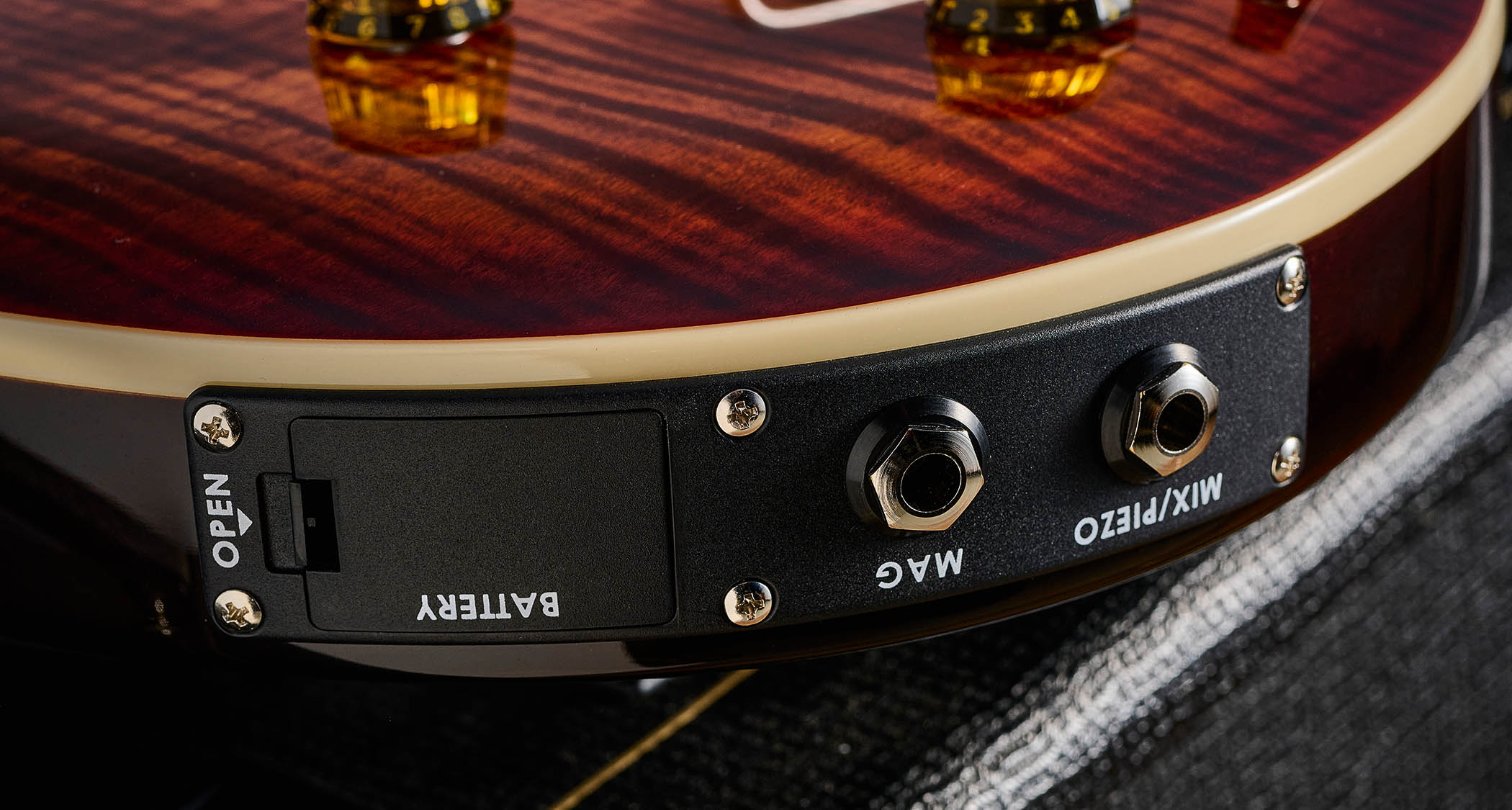
Typically for the SE models, the 24-fret guitars use a three-piece longitudinal neck laminate of maple, and the 254mm (10-inch) radius ’board has the essential solid pearloid bird inlays, while the frets sit over the clean edge binding that extends around the flame maple colour-matched headstock.
The narrowing of the Core/SE models continues with the same style proprietary lampshade control knobs and shaped tip to the three-way lever switch – nice less-generic touches that feature on numerous SE models for 2025.
With the exception of the piezo saddles on the cast vibrato and the added piezo volume control (the lowest control on the body), the 85/15 ‘S’ black bobbined uncovered humbuckers and that three-way pickup selector, master volume and tone control are the same as the standard SE Custom 24. But another difference, of course, is the side-mounted dual outputs, ‘mag/piezo’ and ‘mag’, plus the flip-top compartment that holds the necessary battery.
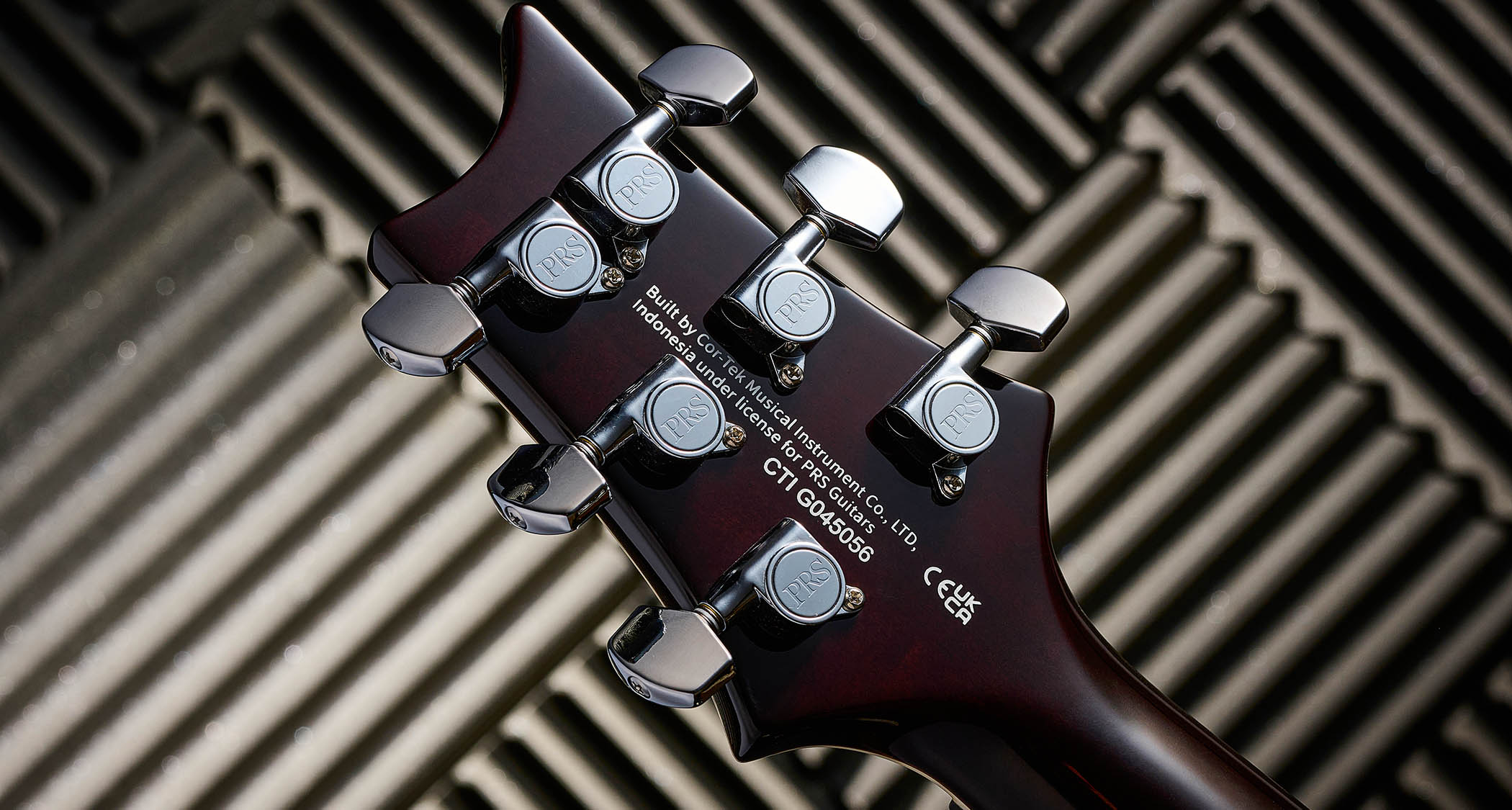
We’re told that the piezo system was redesigned by LR Baggs for this model; it’s not the same as the piezo-loaded vibrato of the current Core Custom 24. Note the hybrid hardware style where the saddles and their height and intonation screws are gold-coloured, contrasting the nickel of the vibrato unit’s baseplate.
“Yes, the vibrato itself differs from the one on the USA Core Custom 24 Piezo in some manufacturing processes and materials, most notably the material of the block,” explains PRS’s COO, Jack Higginbotham.
“Additionally, the outputs of the piezo saddles are ‘summed’ similarly to the SE Hollowbody’s Stoptail, which allows the omission of individual saddle output adjustments. It’s the result of a lot of work on the part of Lloyd Baggs and his team. Lloyd has helped us develop all of our piezos, including the one used on the SE Hollowbody models.
“I personally called him saying I wanted to start thinking about putting the piezo on a vibrato bridge for the SE Series. He called me back a few days later with his initial thoughts, and we went from there.”
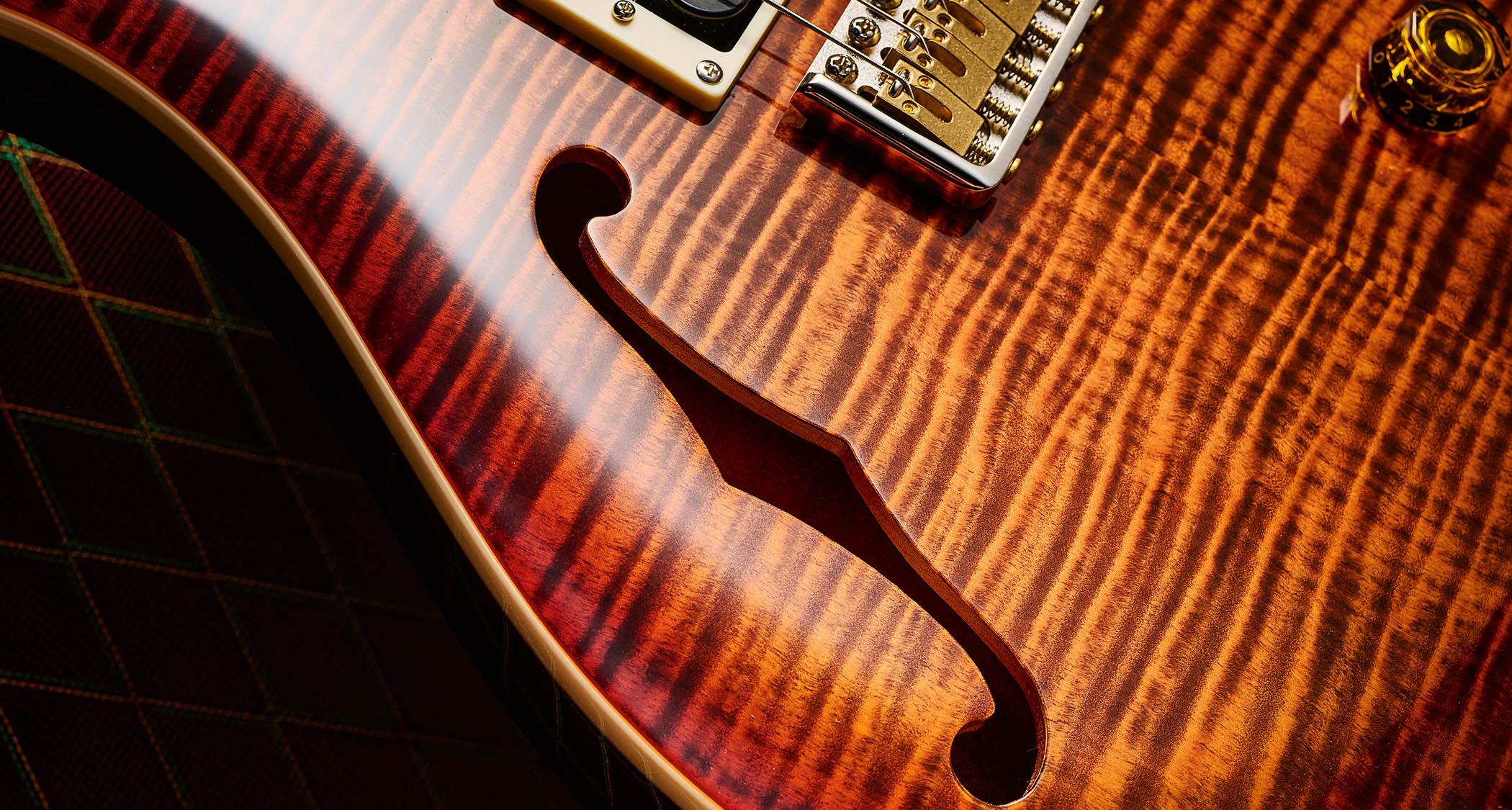
We might cheekily expect locking tuners on a high-level SE such as this, but while the tuners here are perfectly good, says Jack, “we have continued to make differentiations between the SE and USA guitars. Locking pegs is a place we have drawn that line.”
Feel & Sounds
You could call the SE Custom a simplified version of the Core model, but that’s of little surprise bearing in mind the considerable price difference. But considering the overall feel of this one, not to mention the added vibrancy that the semi-hollow construction brings, it really doesn’t feel cut-price in the least.
The construction helps to produce a lighter weight guitar at 3.31kg (7.28lb), though to be fair the most recent and all-solid SE Custom 24 Quilt we looked at back in issue 506 was only slightly heavier at 3.43kg (7.55lb).
We have the same Wide Thin profile neck here, too, that’s very slightly deeper than that Quilt according to our callipers: 21.2mm at the 1st fret and 23.3mm by the 12th, with a nut width of just over 43mm (and string spacing of 36mm). Perhaps it’s because we’ve played a few over the years, but in the hand it never feels over-wide or over-thin – it’s a very well-shaped classic ‘C’ with nicely relaxed shoulders.
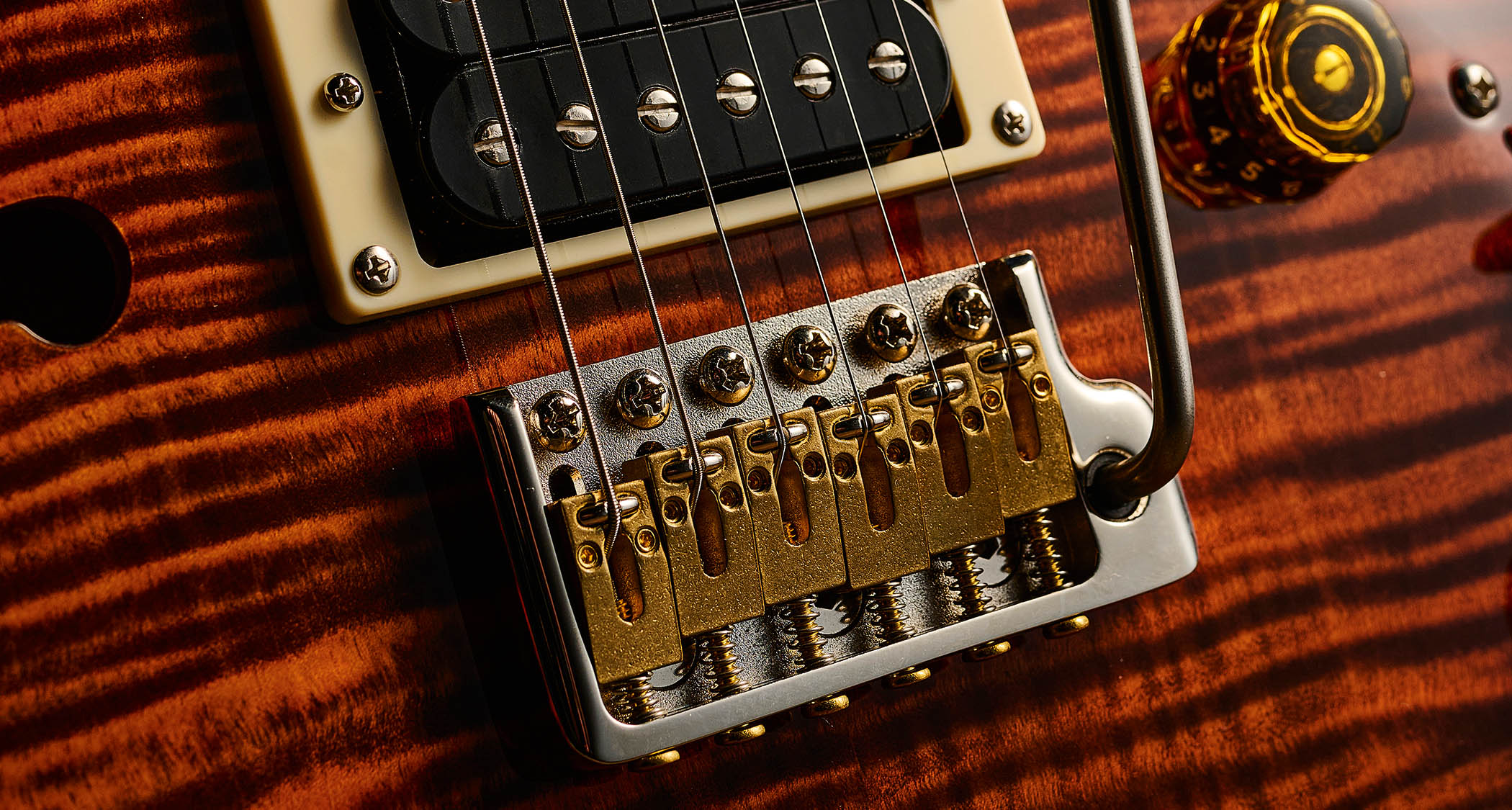
As ever, the setup is perfect, too, and the 12th fret string heights measure 1.5mm on the high E and 1.8mm on the low E, with only a whiff of neck relief. The fretwire gauge is medium jumbo with a width of around 2.7mm, a good enough measured height of 1.1mm, and virtually domed ends.
Unlike many ‘hybrid’ piezo/magnetic guitars we’ve played over the years (including the system on the Core piezo models), the drive here is a simple switch-free zone as on the SE Hollowbody piezo models. So plugging into a clean amp (using the mix/piezo output), you control your magnetic pickups as usual and then add in the completely independent piezo circuit, which is unaffected by the magnetics’ master volume and tone. That’s it.
Listening through various amps, including our AER Compact 60, the piezo-only voice is certainly acoustic-like with plenty of contemporary sheen, good depth and a minimum of that nastier piezo ‘quack’ that can plague many circuits of this type. No, it isn’t like putting a good mic in front of a good dreadnought, but with a little outboard acoustic treatment – light compression and EQ – the acoustic illusion is certainly very present and very usable.
Onto the magnetic side and the 85/15 ‘S’ are real all-rounders, very balanced designs that seem to pull back the honky midrange of a classic PAF with plenty of clarity and bite, especially at the bridge.
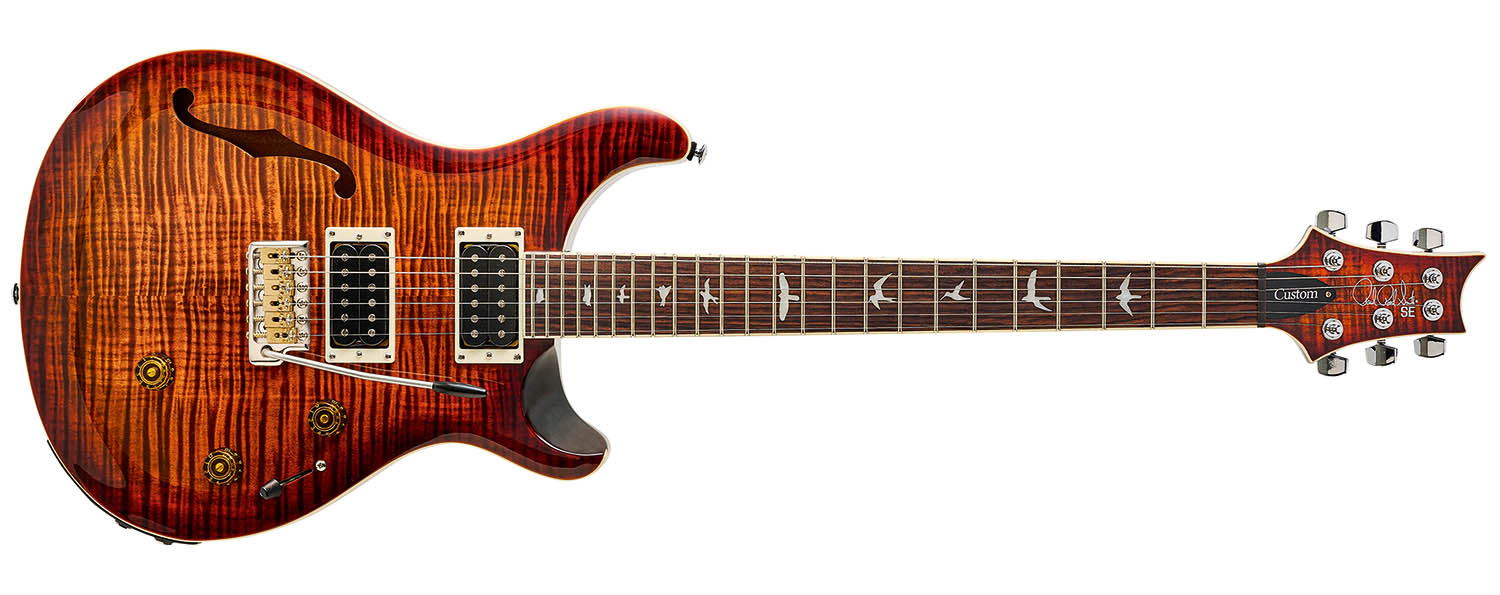
The neck pickup has a very vocal voicing and cleans up the lows a little – partly due to its placement – and responds really well to a little volume reduction, which slightly rounds the highs for cleaner bluesier comping and demure leads, while the bridge has just enough rock kick without sounding overly pokey or compressed.
The coil-splits, which voice the slug coils simultaneously, sound a little brighter and thinner compared with an SE Silver Sky, but they’re perfectly usable, particularly with a few basic pedals in play and with that quite Strat-y dual-pickup mix. It’s a fast drive, too, which is important for those of us who need to cover a lot of bases in that never-ending function set.
But it’s the blend between the two systems that widens your options, which, frankly, are considerable. The obvious way to run the guitar is with two different amp destinations: the piezo direct into a PA or acoustic amp, and the magnetic side into your usual electric rig. This doubling has huge potential and control, but obviously involves more gear.
A little piezo added to the pulled-back neck pickup is the sort of contemporary jazz/fusion sound that Pat Metheny could use for an entire album
Using the mixed output into a cleaner amp produces some real hybrid sounds. A little piezo added to the pulled-back neck pickup is the sort of contemporary jazz/fusion sound that Pat Metheny could use for an entire album.
Just adding a little piezo into the magnetic voice adds a slightly stringier character that enhances some pretty big-sounding jangly voices, great for those strummier, more country-tinged rhythm parts, or to give a bit of edge to old-school rougher blues. Even the straight piezo in this situation works surprisingly well; it’s less hi-fi than the acoustic amp/PA.
Acoustic voices with vibrato? No problem. And while there is a slight ‘clonk’ as you pull the arm fully up in piezo mode, we notice some foam rubber under the four rear springs, presumably just to damp things a little. All in, there’s a tremendous range of sounds to explore and – to our ears – not a bad one among them.
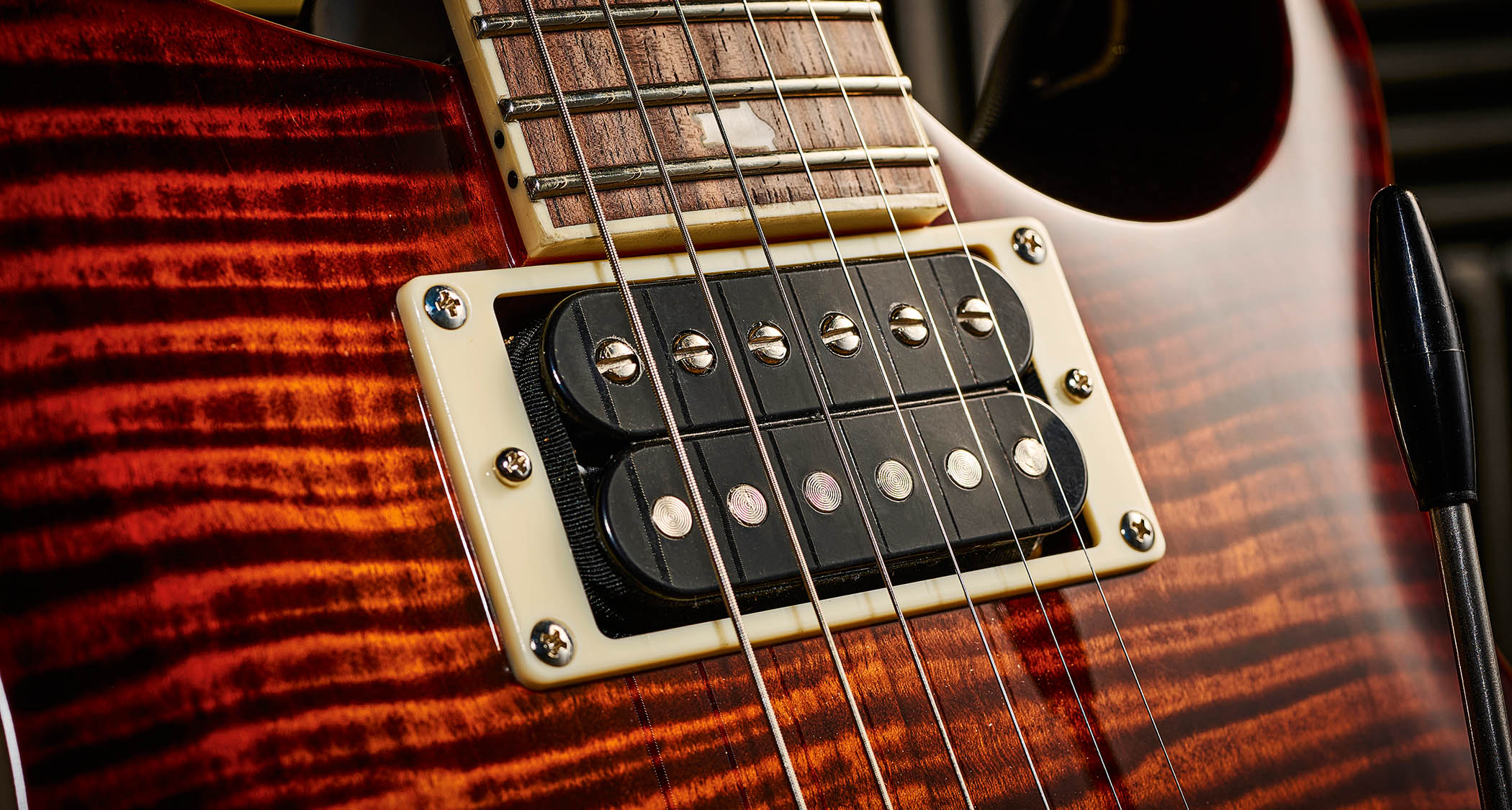
Verdict
As we’re seeing more and more, the SE line is not just ‘Student Edition’ versions of PRS’s upper-tier Core line. Yes, those models do exist, but in the Semi-Hollow Piezo format, this Custom is unique to the entire PRS range and could be the perfect one-stop all-rounder for any practising or gigging musician who needs to cover a lot of sounds with the minimum of fuss.
In isolation, the direct piezo sound doesn’t sound like a well-recorded quality acoustic guitar, but it certainly adds a very acoustic-like character and texture to the magnetic voicing, creating hybrid sounds that you simply can’t get from a conventional electro-acoustic or electric guitar.
It can cover the bases but also break the rules, not least when you start adding very unacoustic-like dirt pedals into your signal path
But even if you have no plans to take to a stage anytime soon, don’t overlook the potential here for a spot of original songwriting and recording where it can cover the bases but also break the rules, not least when you start adding very unacoustic-like dirt pedals into your signal path.
The concept or technology might not be new, but the execution, in such a perfectly made guitar, takes some beating, particularly for any creative musician who’s looking for new sounds. Where would you take it?
Specs
- PRICE: $1,599 / £1,499 (inc gigbag)
- ORIGIN: Indonesia
- TYPE: Double-cutaway solidbody electric
- BODY: Mahogany back w/ maple top (flame maple veneer facing) and shallow violin carve
- NECK: Maple, Wide Thin profile, glued-in
- SCALE LENGTH: 635mm (25”)
- NUT/WIDTH: Friction reducing/ 43.2mm
- FINGERBOARD: Bound rosewood, pearloid ‘old-school’ bird inlays, 254mm (10”) radius
- FRETS: 24, medium
- HARDWARE: PRS patented vibrato (cast) w/ piezo saddles, PRS designed non-locking tuners – nickel-plated
- STRING SPACING, BRIDGE: 52.5mm
- ELECTRICS: PRS 85/15 ‘S’ Treble and Bass humbuckers; 3-way lever pickup selector switch, piezo volume, magnetic volume and tone (w/ pull switch to coil-split both ’buckers)
- WEIGHT (kg/lb): 3.31/7.28
- OPTIONS: Colour only
- LEFT-HANDERS: SE Custom ‘Lefty’ ($889/£1,029)
- FINISHES: Orange Tiger Smokeburst (as reviewed) Charcoal Burst, Lake Blue, Vintage Sunburst – all gloss
- CONTACT: PRS Guitars







